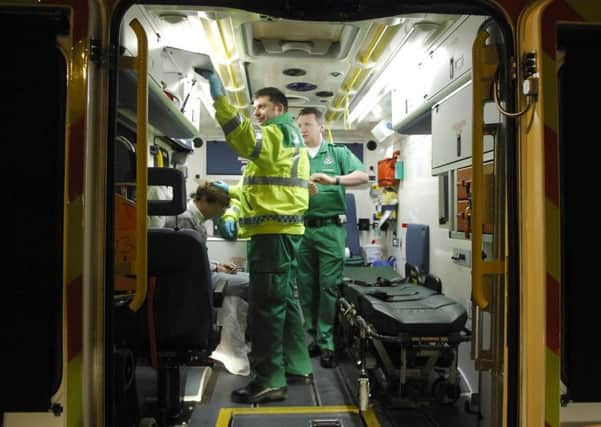Paramedics can send video and ultrasound images with new technology


The trial by University of Aberdeen, NHS Highland and the Scottish Ambulance Service allows hospital-based specialists to provide advice to paramedics during long journeys and potentially improve outcomes for patients.
People living in remote and rural areas can be disadvantaged by travelling miles to a hospital before a definitive diagnosis can be made.
Advertisement
Hide AdAdvertisement
Hide AdSatCare, part-funded by the European Space Agency, uses scanning and communications technology to transmit high-bandwidth images to the emergency department of Raigmore Hospital in Inverness.
Dr Leila Eadie, research fellow at the University of Aberdeen’s Centre for Rural Health, said: “We are taking diagnostic tools used in the emergency department into rural ambulances, making them available at the site of an emergency.
“Previous studies have shown the biggest barrier to practical use of pre-hospital ultrasound is interpretation of the scans. Images can be acquired with basic training and SatCare will facilitate expert assessment of images in the field.”
Five ambulance stations around the Scottish Highlands are taking part, with paramedics trained to rapidly perform appropriate scans.
Scans take less than five minutes to record and they are then transmitted with a video summary of the patient’s condition via satellite to the emergency consultants, who assess the patient’s needs and give advice and feedback to the paramedic.
The technology has already been tested successfully on healthy volunteers. It is now being used for the first time in emergency situations.
Dr Luke Regan, emergency consultant at Raigmore Hospital, said: “Point of care ultrasound, telemedicine and remote decision support have all offered potential over the years to improve care for our patients, but have often failed to secure the kinds of rigorous and substantial research platforms that allow firm conclusions to be made about efficacy.”
Dr Jim Ward, medical director of the Scottish Ambulance Service, said: “The Scottish Ambulance Service is committed to testing and applying the innovative use of technology to improve outcomes for patients.”
Prof Philip Wilson, director of the Centre for Rural Health, described the trial as “a landmark in rural emergency care research”.